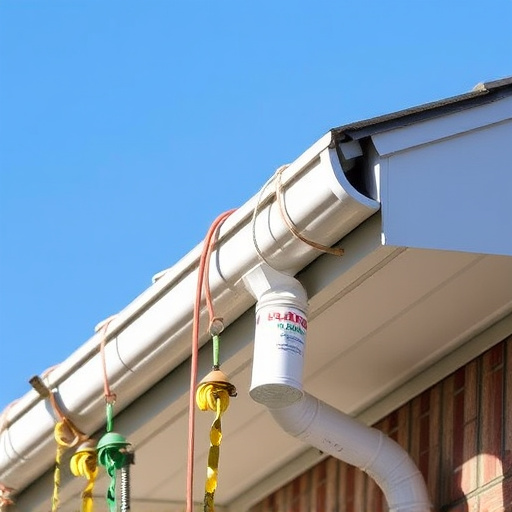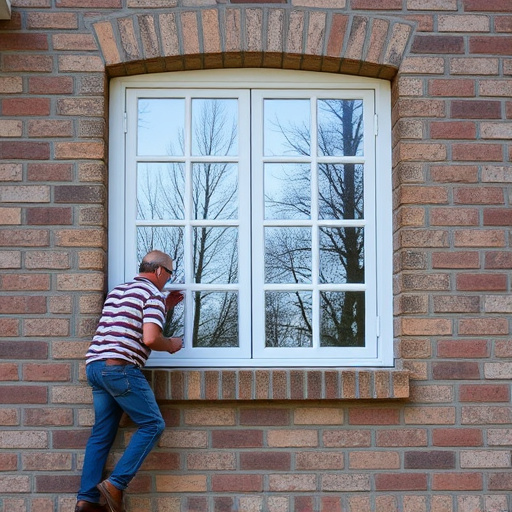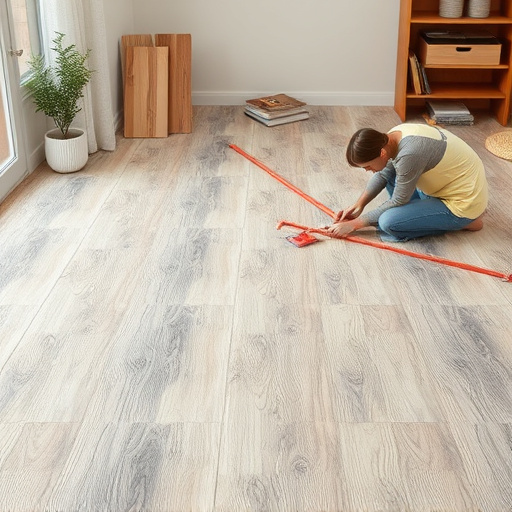Before repairing or renovating your tile flooring, meticulously inspect the existing tiles and grout lines for damage or wear. Assess traffic patterns and consider aesthetic preferences to guide maintenance needs. Prepare your workspace by sweeping and protecting furniture with drop cloths. For grout repair, gather essential tools like a grout saw, cleaner, new grout, float, putty knife, and protective gear. Remove loose grout, clean the floor, apply new grout, and let it set for a refreshed, enhanced tile flooring ready for future painting projects.
Repairing grout lines in old tile flooring is an essential task to maintain a vibrant and durable home surface. This guide will walk you through the process, from evaluating your tile flooring and grout lines to preparing for the repair and finally, a step-by-step approach to achieving a seamless finish. Learn how to navigate this project, ensuring your tile flooring looks as good as new, all while highlighting the beauty of your home’s classic aesthetic.
- Evaluating Your Tile Flooring and Grout Lines
- Preparing for the Repair Process
- Step-by-Step Guide to Repairing Grout Lines
Evaluating Your Tile Flooring and Grout Lines

Before repairing grout lines, it’s essential to evaluate your tile flooring and grout lines carefully. Start by assessing the overall condition of the tiles and grout. Look for loose or missing tiles, cracks in the grout, and any signs of moisture penetration. Note the type and style of tiles you have—some materials may require specific repair techniques. Consider also the layout of your floor and the traffic patterns in functional spaces like bathrooms or kitchens, as this will impact how often the grout lines need to be maintained.
During your evaluation, pay special attention to high-traffic areas where grout lines might be more visible and prone to damage. Compare the current state of your tile flooring with its original appearance to determine the extent of any deterioration. This process will help guide you in choosing the right repair methods for bathroom renovations or exterior painting projects that complement your existing tile flooring, ensuring a cohesive and aesthetically pleasing look.
Preparing for the Repair Process

Before tackling the repair process, it’s essential to prepare your workspace and gather all necessary tools and materials. Start by sweeping or vacuuming the floor to remove any dirt or debris within the grout lines. This ensures a clean canvas for your repairs. Next, protect nearby furniture and floors with drop cloths or plastic sheets to prevent mess and damage during the renovation process.
Consider your overall aesthetic goals for these repairs—are you aiming for a like-new look or something more customized? If you’re planning extensive customization as part of broader residential renovations or seeking unique designs, consult with a professional to ensure the best outcomes. The right preparation will make the repair process smoother and lead to a more satisfying outcome for your tile flooring.
Step-by-Step Guide to Repairing Grout Lines

Repairing grout lines in old tile flooring is a straightforward process that can instantly refresh the look of your space. Here’s a step-by-step guide to help you tackle this DIY project with ease. Start by gathering your tools and materials, which include a grout saw or a utility knife, grout removal tools (like a rubber grout rake or a wire brush), new grout, a grout float, a putty knife, and a cleaner suitable for tile floors. Protect yourself from debris with safety goggles and gloves.
First, remove any loose grout using the grout removal tools. Be careful not to damage the tiles. Next, clean the floor thoroughly to eliminate dirt or grime that might interfere with the new grout’s adhesion. After cleaning, apply a small amount of grout to the float and begin filling in the lines, pressing firmly but evenly. Use the putty knife to scrape off any excess grout, ensuring a smooth surface. Let the grout set according to the manufacturer’s instructions before sealing it with a damp cloth or sponge. With these simple steps, you’ll be able to restore your old tile flooring to its former glory, enhancing the overall aesthetic of your space and potentially even boosting the appeal of your customized home renovations, as well as providing a fresh canvas for interior painting services in the future.
Repairing grout lines in old tile flooring can restore the aesthetic appeal and functionality of your space. By following a thorough evaluation, proper preparation, and a step-by-step guide, you can achieve professional-looking results. With the right tools and techniques, bringing new life to your old tiles is well within reach, allowing you to enjoy a refreshed home without the hassle of complete flooring replacements.














